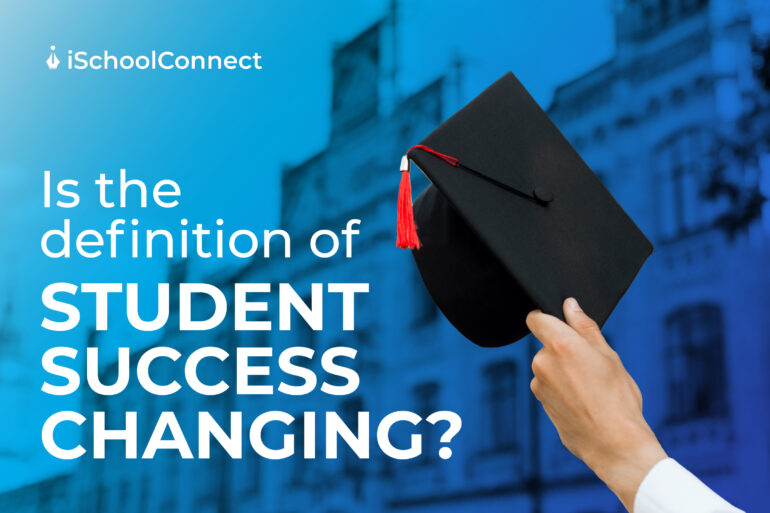Last Updated on December 18, 2024 by iSchoolConnect
The previous year has shown that digital transformation is no longer merely necessary – it is critical. Educators and students have increasingly embraced and depended on digital resources, ranging from mobile devices to online learning platforms, to continue studying outside of traditional classroom settings throughout the epidemic. Today’s most in-demand positions require technological abilities, such as operational research analysts, information security professionals, and web and software developers. Preparing pupils for a fast-changing digital world has never been more important.
Introduction
“Student success” is a word that frequently arises in discussions about higher education. The word logically leads to the following three questions:
- What exactly is student success? (How should student success be defined or measured?)
- How do postsecondary educational institutions encourage student success? (What particular forms of educational approaches help or improve the chances of student success?)
- How can student success be measured or assessed? (What constitutes “evidence” that student success has been realized and that certain experiences during the first year are responsible for its realization?)
From the standpoint of a student, digital transformation provides benefits both during and beyond their time at school. Digital solutions provide kids with a sense of belonging, psychological support, and personal safety while they are at school, all of which lead to better mental health. Every student, regardless of school size, has equal access to digital services and experiences.
That implies they will not be disadvantaged or left behind in comparison to other students because of their program selections. They also benefit from close ties with their classmates, lecturers, and the institution both during and after their time at the school. Together, these advantages increase the likelihood that students will finish their studies and get their degree, resulting in a favorable return on major financial investment and a meaningful and gratifying profession.
Digital transformation enables schools to connect IT technology with their entire purpose and budgets with the digital technologies most vital for student and institutional success. As a result, schools can gain a competitive advantage over other schools at each stage of the student relationship, such as:
- Better communications from the application stage to the alumni stage to attract and recruit students and keep them engaged with the institution
- Higher student retention improves the school’s reputation as a student-centric institution and contributes to a stronger financial outlook
- An active and engaged alumni community to help drive future growth and school success
These benefits, when combined, assist schools in strengthening their brand awareness as a leader in providing great educational experiences. They also assist schools in implementing more robust, agile, and cost-effective IT operations, allowing them to be better equipped to resist economic downturns, unanticipated emergencies, and cyber threats.
5 tips to help students succeed in a digitized world
1. Don’t assume students are tech savvy in an academic setting
- While students today are often called “digital natives,” it doesn’t mean they automatically know how to use technology effectively for learning.
- Familiarity with smartphones and social media does not guarantee students can apply digital tools to academic tasks.
- Teachers must provide clear instructions and training on how to use technology as a learning tool.
- Significant inequalities still exist in terms of access to technology, which can hinder some students’ ability to fully engage with digital learning.
- Ensuring all students have equal access to the necessary technology is crucial for successful digital learning experiences.
2. Assess your classroom for tech readiness
- Preparation and planning are required for digital transformation in education.
- Consider if your classroom is ready to accommodate a technology-rich environment before acquiring a new gadget or installing a new online platform.
- Educators, administrators, and IT staff can collaborate to establish how particular devices should be arranged in a classroom.
- Conversations about overarching goals, budget concerns, and IT infrastructure are equally important when it comes to supporting classroom technology efforts.
- Mike Cicchetti, a Florida-based teacher, provided suggestions for reviewing what schools have available for both digital and analog teaching in another episode of Focus on K-12.
- He not only looks at what the school district has to offer, but he also checks in with his kids. “What tools do they use?” Cicchetti inquired. “What tools have they used in the past?” “I must know where they are.”
- Another suggestion is to make use of your school’s suppliers and community partners to assist students in developing their learning experiences.
- For example, the Rochester City School District in New York was able to plan an event where students could try out various techniques, such as virtual reality headsets, and provide feedback using CDW•G’s Blueprint to Design® service.
3. Encourage students to take the lead
- Although today’s students utilize technology extensively, they can easily become passive consumers.
- They may be reading, seeing, or listening to material found on the internet without really asking questions or engaging with the topic.
- Educators, on the other hand, may give chances for kids to be active technology users and practice future-ready skills in the classroom.
- Adopting instructional practices that encourage collaborating, producing, and sharing with an audience other than the instructor is one strategy to create more engaging interactions.
- Instead of just providing students a digital worksheet to complete, have them seek out and interview experts on a certain issue, then present their findings in the form of a multimedia project.
- This is also where self-management skills come into play, particularly for students in remote learning contexts where they must work autonomously.
- To effectively serve remote students, ensure that your procedures and systems are easily accessible, understandable, and ready to go.
- Encourage students, for example, to utilize a digital notebook as a one-stop shop for organizing notes, collaborating with peers, and reviewing class materials.
- Before breaking pupils up into videoconferencing breakout rooms, offer them particular duties if they are performing group work electronically.
- Educators may better enable students to explore skills and talents that will help them thrive in our rapidly changing digital world by creating learning experiences that allow them to use technology in interesting and relevant ways.
4. Building the right environment
- It is critical for institutions to recognize the ever-changing character of student profiles, which has been exacerbated by the epidemic.
- As non-traditional students (rural students, international students, and corporate students) become the norm, higher education institutions must be willing and able to adapt their strategies across all dimensions of the learner experience in order to efficiently onboard and guide the new-age student.
- To be effective, they must reconsider their leadership perspective and realign their teaching approach to achieve demonstrable results.
- This starts with creating the ideal Blended Learning environment, one that empowers and encourages students to flourish in and out of the classroom.
5. Incorporating impact learning models
- Institutions have had to rely on sophisticated digital transformation strategies to get education back on track.
- Yes, technology’s role has evolved from that of a basic support function to that of the only facilitator.
- With the virtual transition, higher education administrators have numerous chances to improve the entire learning experience for students through tailored, competency-based curriculums.
- For example, academics have been able to integrate campus-based activities with virtual classroom activities to provide students with ease, accessibility, efficacy, and flexibility in education through the Blended Learning and Hybrid Learning models.
- Furthermore, the Outcome Based Education Model explicitly ties programs and courses to particular student objectives, allowing them to succeed at the conclusion of each semester, at graduation, and then after graduation.
Conclusion
- Working with an experienced partner that is well-versed in campus-wide digital transformation strategies and technologies is critical to ensuring that transformation projects achieve the capabilities that colleges and universities require today and in the future.
- The first stage is to create a digital transformation plan that will guide technological requirements.
- Once the strategy has been developed, the following stage is to construct a smart campus foundation that will serve as the cornerstone for all transformation projects.
- This strong, secure, and adaptable communications infrastructure is critical to becoming a more agile and responsive organization that supports its digital natives.

